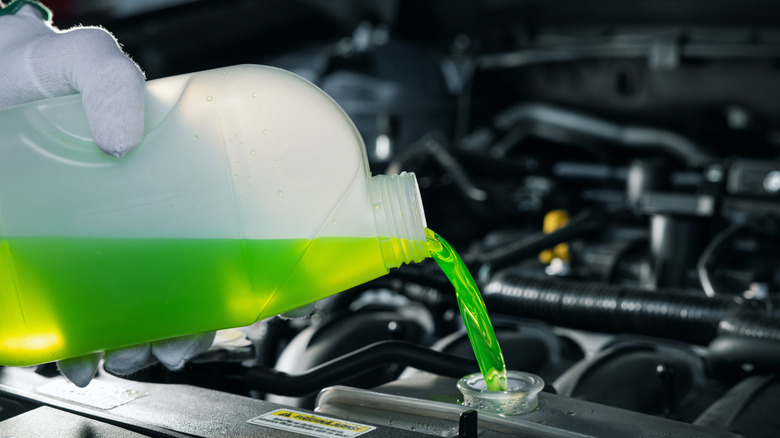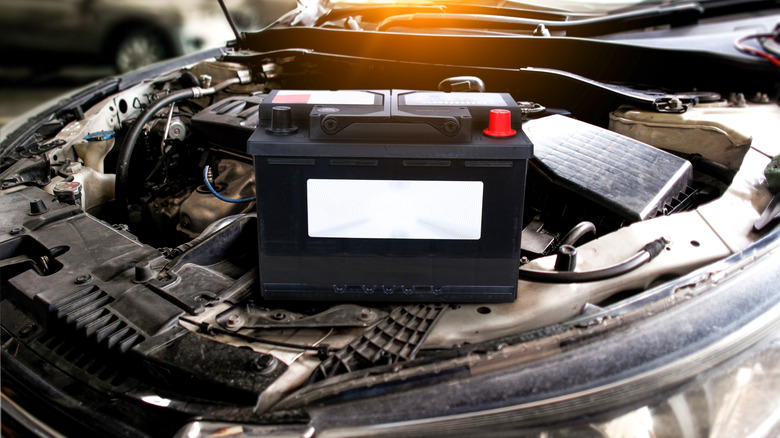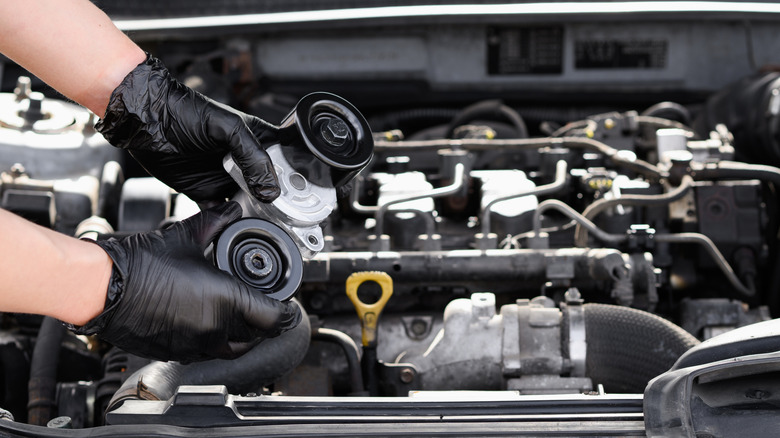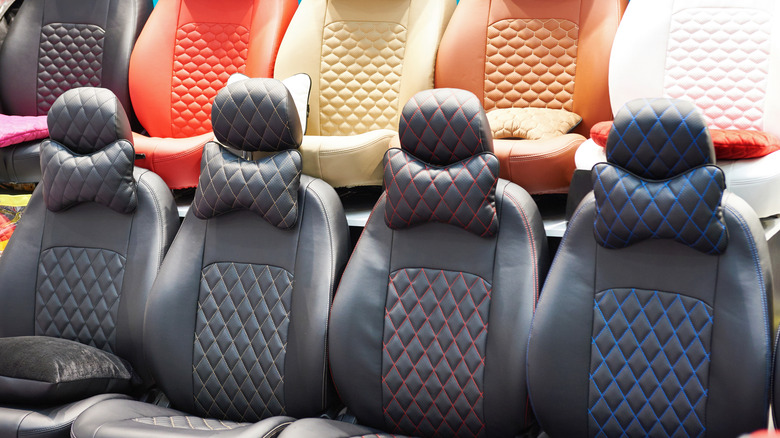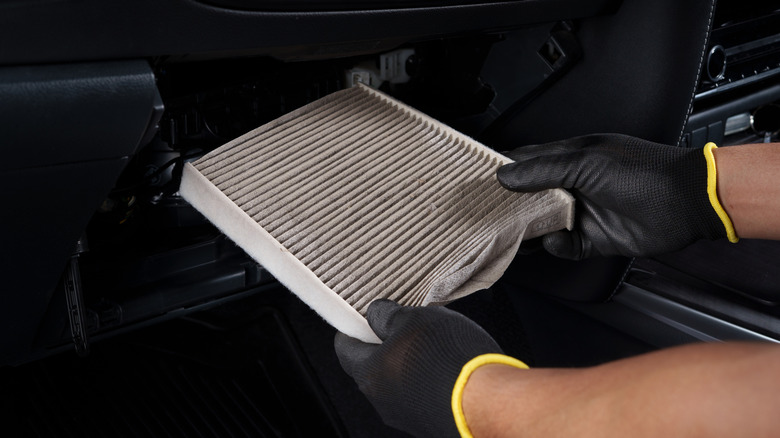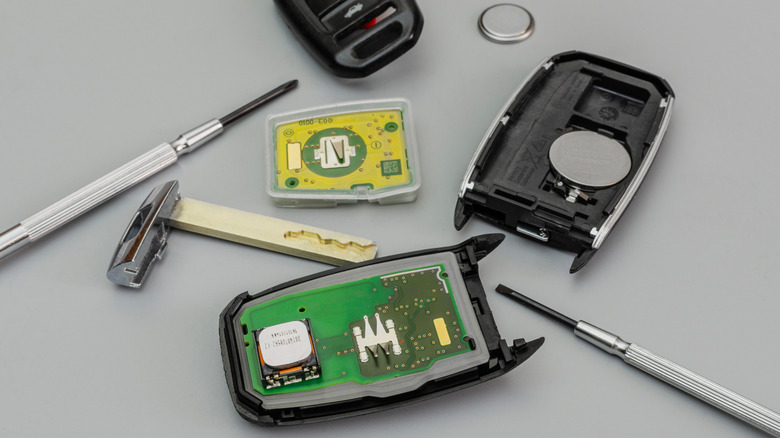10 Wear-And-Tear Car Parts You Should Never Go Cheap On (And 3 That You Can)
One of the easiest ways to make your car run smoothly is through timely maintenance. In that regard, the phrase 'you get what you pay for' has never been more apt. Granted, certain major car brands will cost more to maintain than others, but even with affordable and easy-to-work-on cars, cheaping out on parts is asking for trouble. We get it. Every single owner has the eternal dilemma of whether or not premium parts are worth the extra dough, or if money should be saved via installing budget alternatives.
The answer isn't always straightforward, but getting it wrong can cost thousands of dollars in repairs. In the worst case, you might even find yourself stranded on the roadside or even in an avoidable accident. The market does not make the choice any easier, either. A brake pad from a discount retail garage might cost $40, while another unit from a premium maker might cost $200.
The temptation to save money is understandable, especially when these parts are consumable, i.e., frequently changed. However, certain car parts must never be compromised, as these keep your engine in running order, increase the lifespan of your car, and, most importantly, keep you and your loved ones safe on the road. Here are 10 car parts that should never be compromised for cost, and three that have a little more wiggle room.
Tires
The tires on your car are (ideally) the only part that should be making contact with the asphalt. Many people drive with tires that should have been replaced long ago, as most tires typically last at least a couple of years. One reason tires wear out more quickly than usual is improper maintenance, such as not maintaining the correct PSI (which is not the number on the sidewall of the tire). The easiest way to know if you need new ones is to check the depth of the tread. If the grooves in the tire are less than 2/32 of an inch (3 mm), then it is time for new tires. A popular trick that we can use in the U.S. is to take a quarter and put it upside-down into the grooves on the tire, as demonstrated above.
If you can see the top of George Washington's head, then it is time to go shopping. Studies have also shown that driving with worn-out treads can increase stopping distance by several dozen feet. The danger is exacerbated if the road conditions become wet or visibility drops. Cheap tires tend to wear out sooner due to various factors, so opting for cheap ones means you'll be making an expensive purchase more often.
Brake pads and rotors
We mentioned earlier that the tires are the only part of the car that makes contact with the road, but it's the brake pads and accompanying rotors that actually bring those tires to a stop. As such, the brakes are arguably the most important bit of kit on the entire vehicle. The prices on brake pads vary widely. At the time of writing, the cheapest Walmart brake pads for a 2017 F-150 cost just under $20 for two pieces. Compare that to an OEM part from Ford, for the same model F-150, and it costs a whopping $123, though that is a four-piece set.
It's tempting to save money here, especially when the price difference is so high, but it's not worth it. Studies have shown that using cheaper (which often means lower-quality) brake pads can result in shorter lifespans, damage to other brake system parts, and reduced stopping power. That's not to mention that insurance companies, in the unfortunate case of an accident, may be quick to jump on the fact that subpar brake pads were used in the vehicle. This could very well be developed into an argument that your car's braking system was not up to standard, even if the fender bender was no fault of yours. For all these reasons, it is recommended only to use OEM or high-quality aftermarket brake pads and rotors for replacements.
Brake fluid
As we mentioned, brakes and tires are critical infrastructure as far as road vehicles go, which is why brake fluid should not be compromised at all. For those who don't know, brake fluid is a liquid that is responsible for actually transferring force from your brake pedals to the wheels in order to stop the vehicle. Popular brands for brake fluid in the U.S. include Valvoline, Motul, Prestone, ATE, and Brembo, with most major auto garages having some form in stock. Remember, this oozy liquid is what your brakes depend on to avoid brake fade or failure.
The downsides to getting cheap brake fluid replacement are aplenty, including, but not limited to, degradation of rubber seals and ABS plastic, sludge buildup, and paint degradation in the case of glycol-based fluids. Two of the main types of brake fluid are called DOT3 and DOT4. If you're running DOT3 fluid, you should replace it once every 2 to 3 years. DOT4 can be once every 2 years. But if you're braking a lot, live in mountainous areas, or drive on winding roads, then sooner is better. The only benefit is the upfront savings on price. Remember, if your choice of brake fluid causes your brake rotors and pads to need replacement, all the cons that we just covered in the point above will also apply, which is definitely a situation a savvy driver wants to avoid.
Engine oil
Engine oil is another item that is mission-critical to keeping your car healthy. What many people don't realize is that it's acceptable to top up the engine oil between changes. There are also numerous benefits to changing the engine oil before the recommended intervals, including rust prevention. If you notice your engine is consuming its oil reserve faster than usual, it might be time to take it to the mechanic.
Regardless of the situation, when you do decide to cycle your oil, it is best to stick to the major engine oil brands and pick the top-shelf product. The pricier variants of engine oils often come with loads of benefits, such as better dynamic and kinematic viscosity, both of which are key measurements of the thickness of engine oil. Additionally, premium engine oils often have unique additives in them that extend the life of your engine. Lastly, for people who only drive a short way each day in stop-and-go traffic, synthetic oil is far better suited to their needs than conventional refined crude.
In contrast, the cheaper engine oils will often be made with subpar raw materials, leading to quicker breakdowns (of the oil compounds), residue lingering in oil channels, and even potential engine damage. Thus, it is always advised to go with name-brand (for quality assurance) and high-quality engine oils, as a worthwhile investment in the longevity and efficacy of your car.
Coolant and antifreeze
While we're on the topic of important fluids, let's talk about coolant, antifreeze, and diesel exhaust fluid, or DEF for short. Coolant, as you no doubt know, transfers heat away from the engine with the help of the radiator. Antifreeze prevents the radiator water from freezing into an ice slushy in the winter. Diesel exhaust fluid has long been used in the semi-truck world, but is now finding its way into passenger-commercial uses, such as in heavy-duty pickup trucks. It is mainly used for regulating the amount of nitrogen that diesel engines emit.
The logic behind going top-shelf for all three of these fluids is much the same for engine oil. The premium, more expensive versions tend to use much higher-quality raw materials, are denser, and last longer, meaning greater intervals between changes. To cut a very long story short, when it comes to fluids that keep your car running, just cough up the dough. Saving $50 now just to be slapped with a $1,000 bill down the line because your radiator conked out thanks to sub-par antifreeze is napkin math that no one can get behind.
Oil filter
We just spoke about the need to buy high-quality (not necessarily premium) engine oil for your car. But, at the same time, it's equally important to get a quality oil filter. There is no point in spending money on premium oil and then letting it go to waste because it gets filled with contaminants. The oil filter, as the name suggests, filters oil to extend its life and quality. The filter is usually installed around the engine block, at the underside of the car. As part of its cycle, the oil passes through this filter, and any gunk that has been picked up (rust, debris, paint flakes) through the course of that cycle is then trapped in the filter.
Oil filters cost $8 on the lower end of the spectrum, and can reach up to $75-ish for more premium units. It makes no sense to cheap out on something so affordable to begin with, but it's surprising how many people do so. Those premium units have several advantages, including fewer oil leaks, improved engine health, potentially significant increases in economy, and longer change intervals. At the end of the day, even an expensive oil filter is a $50 part that keeps tens of thousands of dollars of investment protected against unnecessary wear or damage.
Car battery
Car batteries are things that people avoid spending on, and get away with, until that one time they don't. Especially for people who live in temperature extremes, such as hot climates like those found in Texas or Florida, or cold ones like those in Alaska and Maine, it is very important to get a high-quality battery.
At the root of it, all batteries have a positive side and a negative side, and some sort of material in the middle that separates them. Cheaper batteries tend to use materials that exhaust their life more quickly. Quality batteries use rubber, or, in more recent years, cellulose-based separators between the terminals. The most premium versions use a compound called absorbent glass mat, or AGM for short, which is considered amongst the best types of battery on the market at the moment.
A key aspect of car batteries is a measure called CCA, which is an acronym for cold cranking amps. The CCA is a measure of how much power the battery can deliver to the starter motor at temperatures of 32 degrees Fahrenheit or below. For people who live in cold climates, a higher CCA means more peace of mind. If you're soon to need a new car battery, consider looking beyond price to the components and build quality of this critical automobile component. While it may not save your life like tires and brakes, it certainly won't hurt to have a car that starts even in the most extreme weather conditions.
Suspension components
One can get away with cheaper suspension components like shock absorbers, dampers, and struts. The lower-quality components will have the usual problems that budget items do. They'll wear out faster, won't be as hardy (read: impact-resistant) as pricier units, and will probably have a worse warranty. However, cheap suspension units will also be a lot less comfortable, making your vehicle ride harder and more rigidly while increasing road noise that reduces the quality of the ride. Depending on exactly how poor they are, they could also affect handling, impact maneuverability, and even upset the balance of the car.
This is, of course, in addition to the fact that they wear out faster, meaning you'll just end up replacing them again. Furthermore, if any suspension component fails, there is a good chance that it will take some other part with it when it goes. That's why drivers should look for good-quality suspension parts that will take a beating to avoid costly repairs in the near future. This is especially true for vehicles that have air suspension units. You do not want to be left holding that repair bill (often five figures) if the entire assembly needs to be replaced.
Belts, including timing and serpentine units
There are two very important belts that almost every single passenger car engine will have, provided that it's fairly modern. The first of these is the timing chain, found between the camshaft and the crankshaft. It serves the purpose of syncing these two shafts together to keep the engine properly timed. Failure to do so will result in the engine losing a lot of power, as the combustion cycle will not operate optimally.
The next is the serpentine belt, which is what the industry calls the entire drive belt system as a whole. For those who don't know, the serpentine belt, which is what helps the alternator transfer power in addition to running accessories like power steering, is pretty important. Without the alternator running properly, the car will have very little electrical power, limited to whatever's in the battery. In a great many vehicles, these belts are made of rubber, which, while durable, is not infallible. After a couple of years of daily use (exacerbated if you live in an area with temperature extremes), the rubber on these belts will wear out, and it'll be time for replacement. As far as possible, try to equip your vehicle with manufacturer-approved belts for enhanced safety, compatibility, and longevity.
Sensors and electronics
The last part drivers will not want to compromise on is the myriad of electronic systems and sensors that modern cars come with. Back in the day, vehicles had only a few sensors for oxygen, fuel mixture, the catalytic converter, and the gear lever on automatic vehicles. Today, even entry-level cars are overloaded with sensors and other electronic gizmos. What's more, even if one of them goes wrong, it can (and usually will) disrupt the whole circuit loop, causing a chain reaction of other problems.
For example, a faulty wheel speed sensor could potentially disable the ABS, traction control, and stability control on your car all at once. We could go on a tangent about how manufacturers are deliberately making it more difficult to get non-OEM sensors to work with all the complicated onboard computers, but that's a right-to-repair conversation for another day. For now, just know that spending for the (admittedly overpriced) sensors on your modern car is worth it for the headache that it will avoid down the line, not to mention the voided warranty if that's applicable.
Seat covers and floor mats
There are indeed some consumable car parts where it's okay to get the basic version. First, and one of the most obvious, is seat covers and floor mats. A cheap and cheery seat cover that costs say $30, might not have the plush feel or exact fit of a $200 tailored cover, but it will still shield your seats from spills and wear. For many drivers, that's good enough. It is much the same case with a Walmart house-brand $20 floor mat vs a $150 WeatherTech mat. Both will keep the floors of your car free from grime and dirt, and can be easily cleaned or replaced.
The logic behind this is simple. Why would anyone want to spend extra money on getting premium floor mats that people will barely notice, and that don't have any added utility over the basic, affordable version? It's just throwing money away. Many chain retailers such as Walmart, Sam's Club, Costco, and Target will carry some form of seat protector and universal-size floor mats for cars. Save your money and spend it on one of the parts we outlined above.
Cabin air filter
The cabin air filter is a bit of kit that is usually housed near or behind the glove compartment. It purifies the air entering your car's cabin, removing odor, dust, and debris. Most drivers don't even realize that a part called the cabin air filter exists until a technician tells them that it's due for replacement. Basic cabin air filter units can be had for a base price of around $15, while the price can climb to as much as $65 on the higher end for fancier models. Now, this could easily lead to uninformed or inexperienced drivers simply assuming that the expensive versions are superior in quality.
The truth is that basic units get the job done just fine. However, readers with specific sensitivities or needs, such as pollen allergies, could absolutely benefit from a premium cabin air filter. These come with features such as charcoal in the filter and pollen mesh protection technology that could make allergy season just that much more bearable.
Key fob batteries
Typically, when a key fob for your car stops working, it's because the battery has run out. If you visit a dealer, an authorized service center, or an independent garage, you might be quoted an unfair price. These centers may not hesitate to give you a three-digit quote for re-programming the key fob or flashing on new software, but the solution might just lie in a cheap five-pack of batteries. Now, bear in mind that key fob batteries don't use the standard AA or AAA batteries. They usually use a specific kind of coin-cell.
One common specific battery type is the CR2032, and they're so cheap that they are usually sold in packs of four, six, or 10. At the time of writing, a set of four CR2032 batteries can be had on Amazon for about $4.99, and it's perfectly okay to give this method a go before surrendering to the dealer. Any time you get a chance to avoid a dealership or commercial repair shop premium at the risk of just a few bucks, you should seize it.
We're now at the end of our list of car parts that you shouldn't (and should) save money on. A little due diligence will go a long way in keeping your car and its occupants safe and satisfied for a long time.





